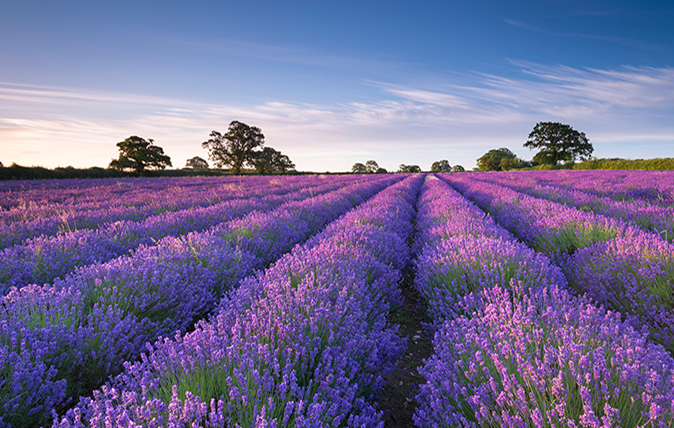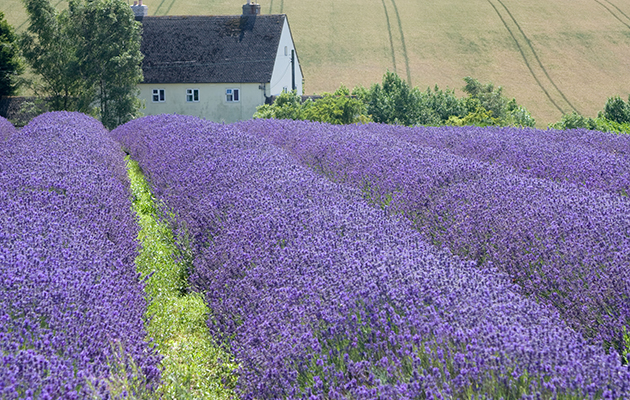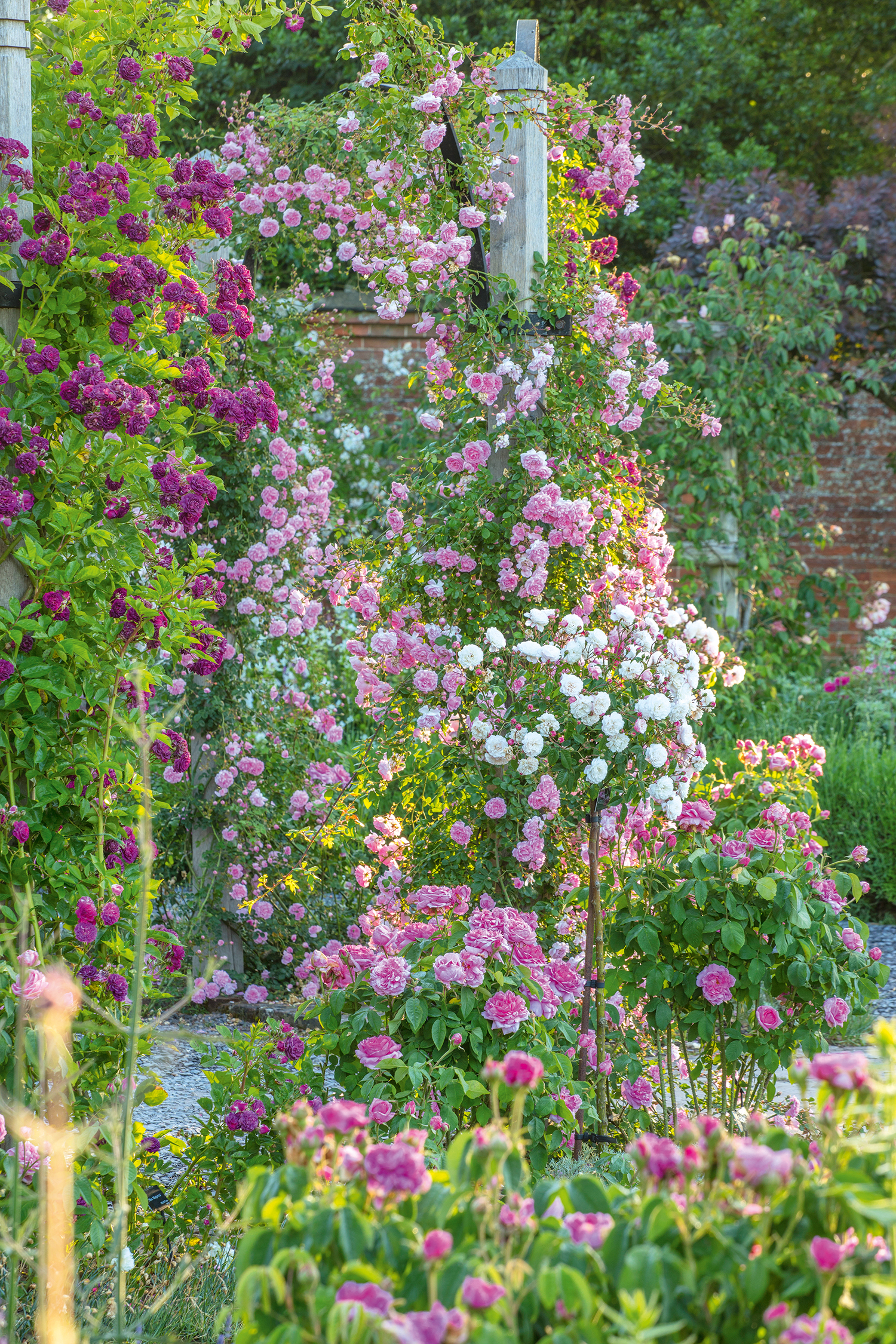It's been raining almost non-stop for 11 months — but one plant has defied the weather
Lavandula x intermedia ‘Phenomenal’ has lived up to its name, defying everything the weather has thrown at it. Kathryn Bradley-Hole writes in praise of this hardy, happy lavender.


So much of what happens, in summer and after, is due to what forecasters like to call ‘weather events’ that occurred in the previous winter and spring. For example, the ‘eventful’ months of nearly non-stop rain from last October onwards — a veritable marathon of inclemency — certainly benefited the roses this summer. Once they got going, their flowering was abundant — and curiously lacking in aphids. Hydrangeas, too, have been superb this year, relishing the extra ground moisture. Having just returned from admiring a choice collection in Ireland, I’m inspired to plant more of them, especially the elegant H. serrata types that carry the daintiest of ‘lacecap’ flowers, in lovely pastel tints.
Despite the rain continuing right through blossom time, there’s an abundance of juicy apples, pears and plums. The figs, however, have mostly had a year off. Sometimes, it is assumed that figs will cope well with little water, as their natural home is the Middle East and the eastern Mediterranean. However, when growing in the wild, they often seem to favour the edges of field ditches and riverbanks, where any thirst can be easily sated. On arid hills, their strong roots can penetrate deeply through fissures in the rocks, finding groundwater in aquifers. All those big, hand-shaped leaves and juicy fruits benefit from a good water source to produce at their best, so the sogginess of winter and spring did them no harm, but they disliked the severe rationing of sunshine.
Still with the Mediterranean in mind, it was the lavenders that came out tops in both the winners’ and losers’ categories this year. Lavender doesn’t thrive here in East Sussex, disliking the clay soil, which sits cold and wet around its roots in winter. The solution has been to grow it in very large pots filled with a premium John Innes No. 3 compost, with a few added scoops of vermiculite mixed in, to increase aeration. Lavender is worth having for many reasons, not least because it draws in various pollinators. I make a point of growing some close to the tomatoes, peppers, aubergines and chillies that thrive on the sun-baked terrace, near the kitchen door.
"It has shown remarkable resistance to a wide range of temperatures and also humidity, thriving from Alaska to Kentucky and even Florida"
This year’s losers in the lavender class were the familiar English varieties among Lavandula angustifolia. Even when mollycoddled in pots, as described above, they just got tired of all the grey skies and months of rain (as most of us did) and succumbed to rot. Soggy lavender is a sorry sight indeed and they all went into the composting.
Conversely, the admired American hybrid, Lavandula x intermedia ‘Phenomenal’ lived up to its exultant name, defying everything the weather has thrown at it, so far. Parented by the outstanding cultivar L. x intermedia ‘Grosso’ (a popular commercial lavandin often seen on Provençal hillsides), ‘Phenomenal’ was raised in Pennsylvania, US, in 2012 and patented in 2014. Since then, it has shown remarkable resistance to a wide range of temperatures and also humidity, apparently thriving across North America’s varied climates, from Alaska to Kentucky and even Florida. From early morning until the sun sets, bumblebees forage over its long spears of blue-violet flowers, whose season helpfully runs from mid June to early September.
Bumbles apart, I do wonder, where have all the insects gone? I’ve struggled to find any aphids in the garden and, likewise, there are no ladybirds. Last summer, charismatic hummingbird hawk moths visited the garden daily. None this year, but there has been none of the usual butterflies — no glamorous red admirals, no peacocks, no commas or orange tips. There are plenty of gatekeepers, speckled wood and some large white, but not much else. Also, no wasps and hardly any flies, including hoverflies.
Apparently, 2024 saw the wettest spring since 1986, clearly affecting insect opportunities to fly, mate and lay eggs. Could there be other reasons that are compounding the catastrophic seasonal loss? A paper published in 2022 by Frontiers in Public Health, Low-level EMF effects on wildlife and plants: What research tells us about an ecosystem approach (Levitt, Lai, Manville), draws upon 130 studies worldwide. Its conclusions leave no doubt that insects and other species are extraordinarily vulnerable to the ubiquitous, ever-increasing, but invisible pollution of radiofrequency radiation and electromagnetic fields (including, but not limited to, 3G, 4G, 5G), which, arguably, might be thought safe for humans.
Exquisite houses, the beauty of Nature, and how to get the most from your life, straight to your inbox.
Wildlife is completely unprotected and flying insects, including bees, are among the most vulnerable species, to the point of inevitable extinction if protective measures are not taken soon. It’s undeniably uncomfortable, but necessary information. One day, will we stop shifting all the blame on the weather?

The beauty of British lavender
Lavender crops are proving successful for some enterpising British farmers looking to diversify their businesses

The history of lavender
Robert Clark falls in love with lavender.

Inside the garden of Eton: A rare glimpse into the grounds of the world's most famous school
The gardens of Eton College in Windsor, Berkshire, date back to a request from its founder, King Henry VI. Over

Succession planning for plants? The organisation saving our National Collections
Charles Quest-Ritson is full of praise for an organisation dedicated to keeping alive Britain's widespread national plant collections.
